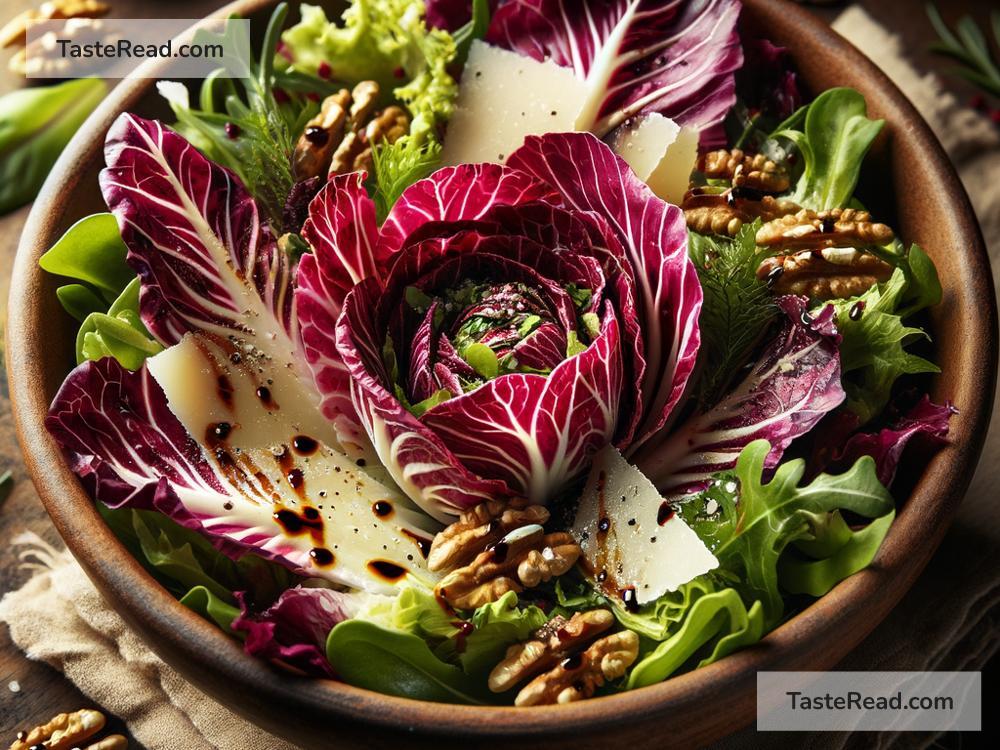The Fascinating Role of Radicchio in Italian Salads
Italy is world-famous for its exquisite cuisine, and when we think of Italian food, we often picture pizza, pasta, or gelato. Yet, there’s another star ingredient that holds a special place in Italian kitchens: radicchio. Known for its striking red-purple color and slightly bitter taste, radicchio adds a unique flair to salads across Italy, making it a staple of the country’s culinary tradition. Today, let’s explore radicchio’s fascinating role in Italian salads and uncover why it deserves a spot on your plate!
What is Radicchio?
Radicchio (pronounced rah-DEE-kee-oh) is a type of chicory. It comes in several varieties, but the most common ones resemble small cabbages with deep burgundy leaves and white veins. If you’ve ever seen a salad with bold pops of crimson, chances are radicchio was the secret ingredient.
This vegetable has been cultivated in Italy for centuries and thrives in the northern regions, such as Veneto. In fact, some varieties are named after the regions where they’re grown, like Radicchio di Treviso and Radicchio di Chioggia. While radicchio is loved for its beauty, it’s also prized for its distinct flavor—a perfect mix of bitterness and crunch.
The Role of Radicchio in Italian Cuisine
In Italian cooking, balance is everything. Flavors such as sweet, savory, sour, and bitter are carefully combined to create dishes that delight the senses. Radicchio plays an important role in this balancing act, bringing bitterness to the table. Italians believe that bitterness wakes up the palate and keeps meals exciting, rather than one-dimensional.
But radicchio isn’t just about taste—it’s about tradition. In Italy, salads are not just an afterthought or a side dish. They are an opportunity to showcase seasonal vegetables, vibrant colors, and fresh flavors. Radicchio often takes center stage in these salads, either as the base or as an accent ingredient that contrasts beautifully with softer greens like arugula, spinach, or romaine.
Popular Italian Radicchio Salad Recipes
Radicchio pairs well with a variety of ingredients, which is why it appears in so many Italian salads. Here are some popular combinations you’re likely to find in Italy:
-
Radicchio with Walnuts and Gorgonzola
One of the simplest yet most satisfying ways to enjoy radicchio is to pair it with creamy gorgonzola cheese and crunchy walnuts. The bitterness of the radicchio is balanced by the mild, savory gorgonzola, while the nuts add a rich, earthy touch. A drizzle of olive oil and balsamic vinegar ties this salad together perfectly. -
Radicchio and Citrus Salad
Italians love using fruit in their salads, and radicchio shines alongside bright citrus flavors. Oranges or grapefruits are often sliced thin and combined with radicchio to create a refreshing, vibrant dish. A sprinkle of fennel seeds or slivers of fresh fennel is sometimes added for extra flavor. -
Radicchio and Prosciutto
Another iconic pairing in Italy is radicchio with prosciutto. The salty, delicate cured ham provides a wonderful contrast to the crisp, bitter leaves of radicchio. This combo is often enhanced with shavings of Parmigiano-Reggiano and a light vinaigrette. -
Mixed Green Salad with Radicchio
A classic Italian mixed green salad often features radicchio alongside other ingredients like arugula, endive, cherry tomatoes, olives, and cucumbers. This type of salad is versatile and served with a dressing made from olive oil, lemon juice, and a pinch of sea salt.
Health Benefits of Radicchio
Besides being delicious, radicchio is packed with nutrients, making it a healthy addition to Italian salads. It’s rich in antioxidants, which help protect the body from damage caused by free radicals. It’s also high in fiber, aiding digestion, and contains vitamins like vitamin K, vitamin C, and folate.
Interestingly, the bitterness of radicchio comes from its phytochemicals—natural compounds that have been linked to health benefits such as reducing inflammation, supporting liver function, and improving heart health. Italians have long embraced bitter foods, believing them to be good for the body and soul.
Tips for Cooking with Radicchio
If you’re feeling inspired to try radicchio at home, here are some simple tips to get started:
- Pick the freshest radicchio: Look for heads with tight leaves and vibrant color. Avoid those with brown spots or wilted edges.
- Tone down the bitterness: If you find radicchio too bitter, try soaking the leaves in cold water for 10-15 minutes before using them. Grilling or roasting radicchio can also mellow its flavor.
- Experiment with pairings: Radicchio pairs beautifully with sweet, salty, and creamy ingredients, so don’t be afraid to mix and match.
Conclusion
Radicchio may not be as well-known as other salad greens, but its bold flavor and vivid color make it a standout ingredient in Italian cuisine. Italians value radicchio not only for its taste but also for the depth and complexity it brings to their meals. Whether paired with gorgonzola, citrus, or prosciutto, radicchio elevates salads to a whole new level.
If you’re looking to add a touch of Italian flair to your cooking, give radicchio a try. Who knows? It might just become the star of your next salad! So grab a head of radicchio, get creative in the kitchen, and enjoy a taste of Italian tradition on your plate.


